Last week we identified some desirable landscape plants and their flowering characteristics; this week we’ll identify some less desirable and more aggressive growing plants. These plants are considered invasive, meaning they are very aggressively growing and prolific fruit/seed producers and cause ecological or economic harm. The exact definition usually specifies that an invasive plant must be non-native, but this is somewhat contentious among researchers. Some of these plants we’ll identify in this post are actually native to North America but are aggressive and prolific to the extent of being considered invasive or having invasive characteristics.
These plants are usually considered invasive because of the harm they cause to rejuvenating forests and savannahs. Invasive plants proliferate and grow more aggressively than native species, meaning, as a mature oak tree dies in the woods an invasive tree may sprout up and prevent an oak seedling from replacing its ancestor tree. Over time, these invasive plants can completely alter a habitat by shifting the diversity of plants.
Tree of Heaven
This tree is a native of Asia and is highly detrimental to native vegetation and ecosystems. It may form colonies by sprouting from the root systems of mature plants and is a very prolific seed producer. A single tree may produce up to 300,000 seeds per season! The large pinnately compound leaves are similar to Sumac. The bark is smooth and dark with spots but not much furrowing, and the seeds are in papery pods which can be confused for maple samaras. The flowers can be somewhat showy, and the leaves have been described as having a rotten peanut butter odor when crushed or bruised. Tree of Heaven produces allelopathic chemicals which can inhibit the growth of other nearby plants. It is also the preferred host of one of Chicagoland’s newest problematic invasive insects: the spotted lanternfly. See our previous post about spotted lantern fly here: https://homertree.com/blog/spotted-lanternfly-spotted-in-illinois/

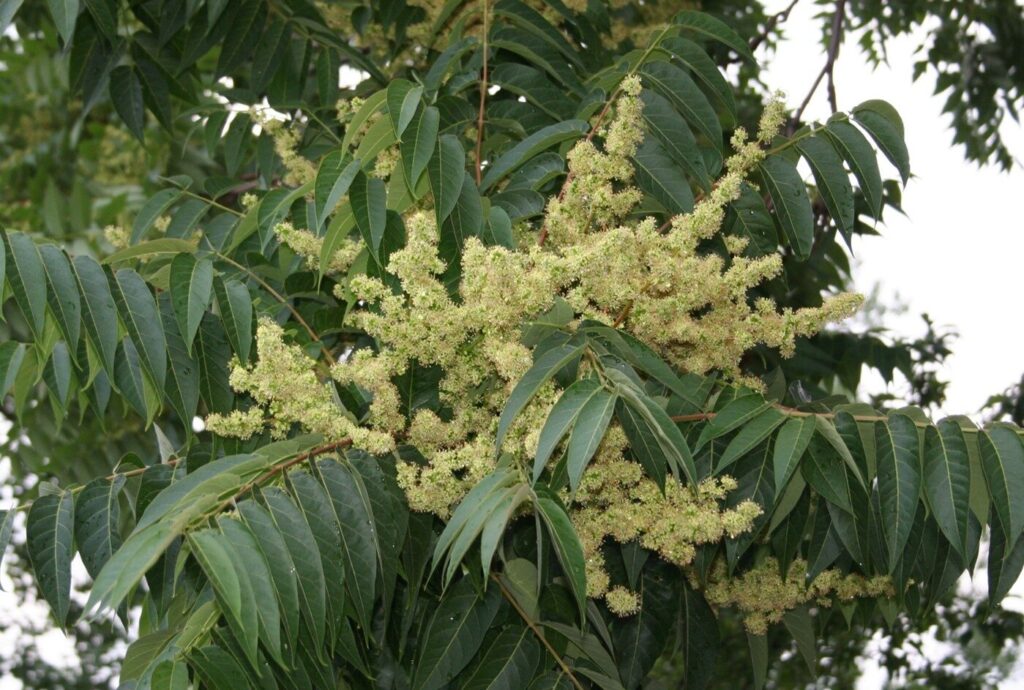
Norway Maple – Acer platanoides
Did you know that a nice Norway maple tree in your yard may be considered an invasive plant? Although not technically on the noxious weeds list for our state, this tree is known to shade out native understory plants and seedlings of native trees. Over time, Norway maple reduces species diversity in native forests and changes forest habitat and ecosystems. Norway maple can be problematic from an arboriculture perspective as well. It has a reputation in the forestry industry for splitting branches/limbs from the trunk and having a weak structure. This tree also tends to form root issues especially if mulched improperly. Although the state of Illinois isn’t calling for the removal of living Norway maple trees from the landscape, if you have one that is due for replacement we certainly recommend planting a different tree in its spot.

Bradford Pear/Callery Pear – Pyrus calleryana
Once considered an ideal landscape plant by foresters and arborists, this Asiatic ornamental pear tree has beautiful sprung flowers but has become a very problematic landscape tree for the Midwest. At one time a particularly ornamental specimen tree of Pyrus calleryana was thriving on the roadside in Minnesota. Two plant breeders noticed the ornamental properties of the tree and propagated off the same mother plant, unaware of each other. One became Callery pear and the other Bradford pear. At least, this is the story of how they both originated. The two hybrids were sterile with themselves, but quickly cross-pollinated in the landscape to produce fruit and quickly escaped cultivation into the wild. Now, ornamental pear invades all sorts of native habitats and will quickly shade out virtually every other plant. I’ve even seen an ornamental pear sprout under another tree and over the course of 2 years overgrow and shade out the native plant species.
Cultivated plants are typically thornless but wild-grown plants are typically thorny. The bark is furrowed similarly to Ash, and the glossy simple leaves are easy to identify once recognized. Ornamental pears are a member of the Rose family and are very susceptible to fireblight and rusts. Bees attracted to the white flowers can actually carry the pathogen between plants, spreading the fireblight bacterium. Read more about the fireblight pathogen and control options in our previous blog post here: https://homertree.com/blog/the-fiery-threat-to-fruit-trees-fire-blight/
Ornamental pear has a reputation in the arboriculture industry as having very weak narrow limb attachments, leading to numerous split branches and limbs during storms. Split limbs will often tear bark away from the trunk, which can be fatal to the tree or put it into decline. This problem is so commonplace that these trees rarely reach full maturity and instead will fall apart after a few decades in the landscape. We do not recommend planting these trees anymore, even if they are not yet technically considered invasive.
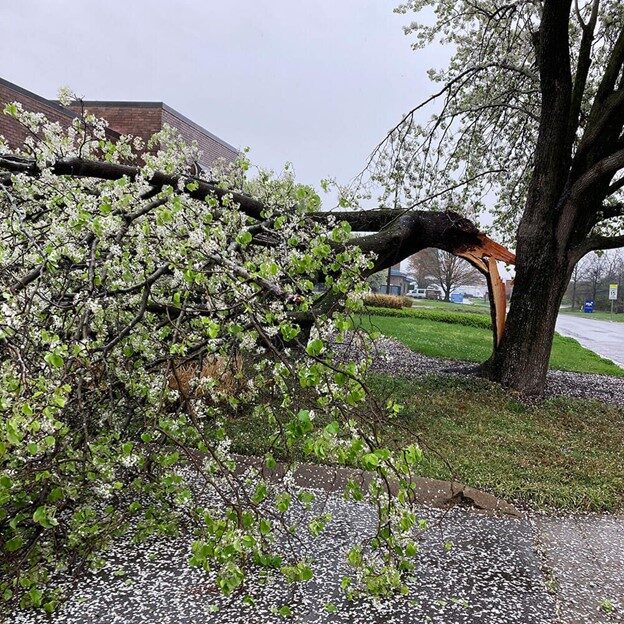
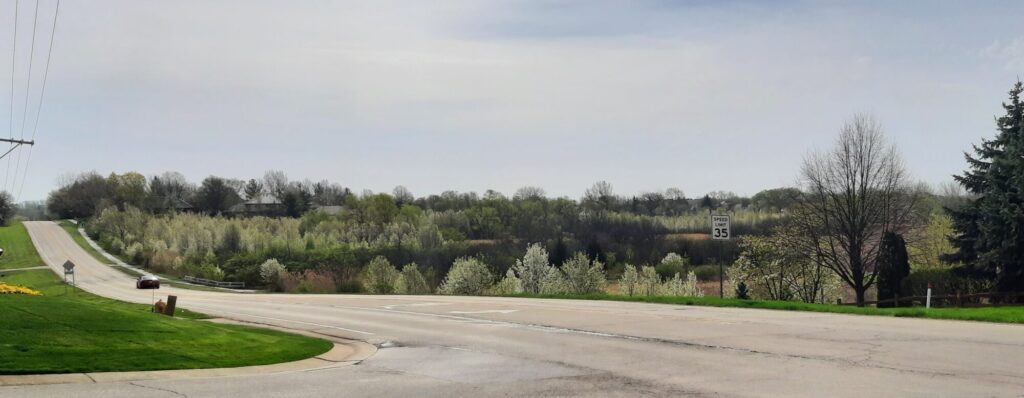
Black Locust/Prickly Locust – Robinia pseudoacacia/Robinia hispida
We pointed out earlier that invasive plants are considered invasive if they are both aggressive growing and non-native to the area. All previous examples are plants from Asia, but the Black locust and Prickly locust are both native plants that are considered invasive in other parts of the world, and some consider it invasive in North America where its native range is relatively small but has been cultivated and planted in a broader range where it naturalized and proliferated.
Black locusts are similar in leaf shape to honey locusts (gleditisia tricanthos) but with larger leaflets. The flowers are very showy and attractive in spring and summer. Robinia is a member of the Fabaceae family and is nitrogen-fixing. They’re very fast growing and can out-compete other native trees, becoming a problem for forest ecosystems as they change the diversity and habitat of an area. They also produce thorns along branches which can be very sharp and pierce thick layers of clothes. Prickly locust tends to stay much smaller and form a shrubby thicket, while Black locusts can more commonly grow as a true tree-form.
Prickly locust, or Robinia hispida, is considered less problematic from an invasive perspective but still shares many of the characteristics of Black locusts. It may still take over an area and outgrow natives. Cultivars of these trees are still on the market and available for purchase, though we recommend staying away from all these negative impacts they may have. It’s a shame because they have gorgeous flowers and a unique shape.
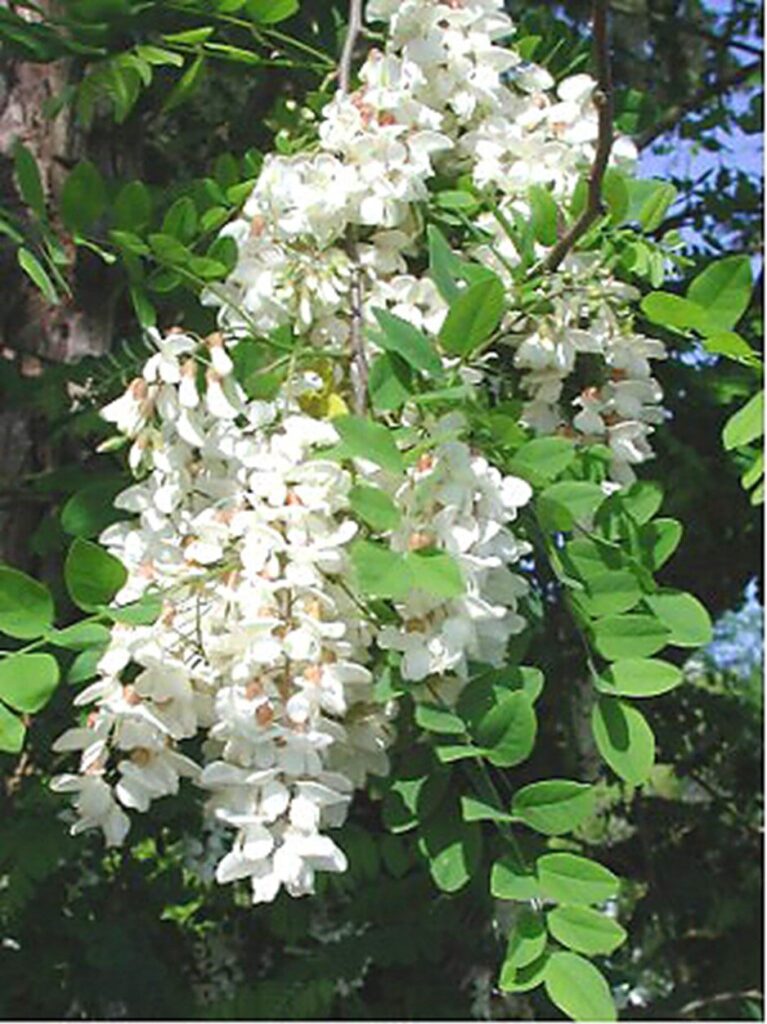
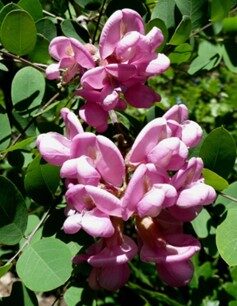

Common Buckthorn – Rhamnus cathartic
Buckthorn is a classic invasive plant for the Midwest. Several species are invasive, cathartica being the most well known and prolific. Colonial settlers introduced Buckthorn for its fast growth and utility. This plant thrives in forest understory and can completely eliminate plant diversity where it grows and spreads. The glossy simple leaves and shape of the tree are immediately recognizable once learned. The spring flowers are inconspicuous but the fruit are a dark purple/black color and are commonly foraged by birds and carried before being dropped. You’ll find Buckthorn around fence lines commonly where birds will drop the seeds. Buckthorn will usually stay as a shrub in the understory of forests, but can also grow into a small tree up to about 30 ft tall. This Illinois noxious weed should be cut and removed on-site if discovered. The bark is somewhat smooth with thorns developing on stems and branches at sharp 90-degree angles. The wood also has a bright yellow coloration.
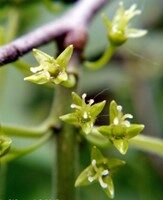
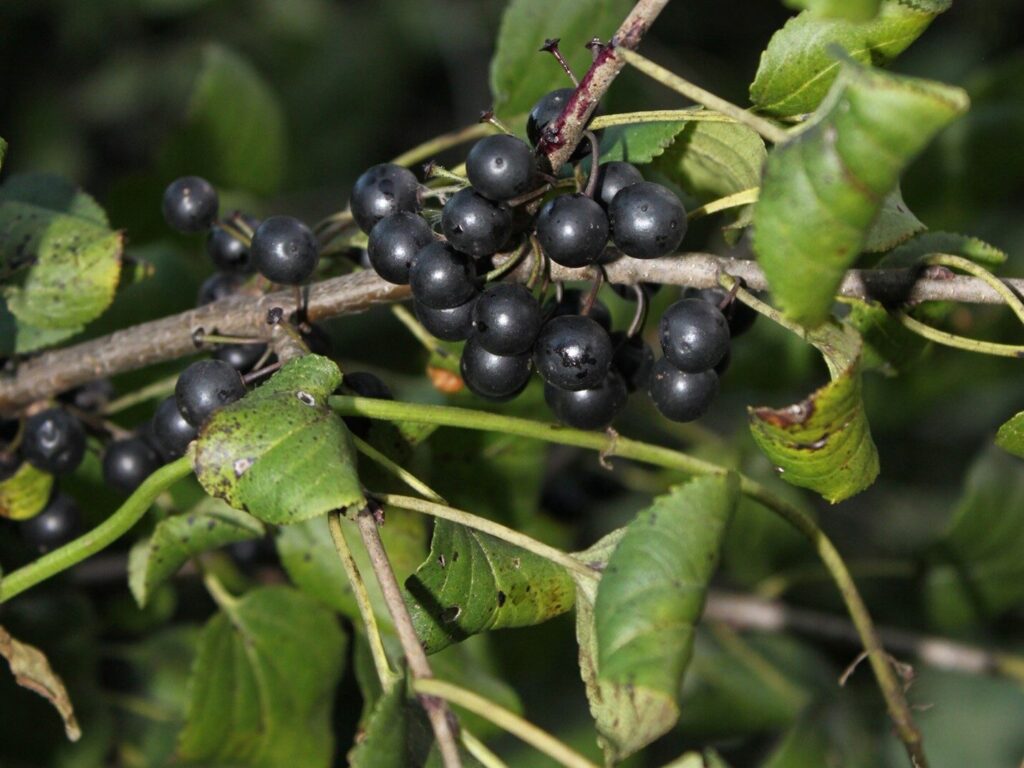

Amur Honeysuckle – Lonicera maackii
Another understory shrub that can choke out native habitat plants. Honeysuckle has simple leaves with pointed tips and stays to a more shrub form growing not more than 20’ tall and spread prolifically through berries and by forming colonies. Not to be confused with Diervela lonicera, which is named after a similar leaf shape but is not an invasive species.
Honeysuckle blooms very early in spring and loses its leaves very late in fall, giving it a growth season advantage over native plants. The berries are unmistakable bright red and are very numerous. Just like Buckthorn, the fruit is foraged by birds and carried/deposited commonly along fence lines. The flowers are white and not particularly showy, but arrive early and can be fragrant. Some species flower in summer and some in early spring. The bark has a distinct striped characteristic that always reminds me of a burning bush.
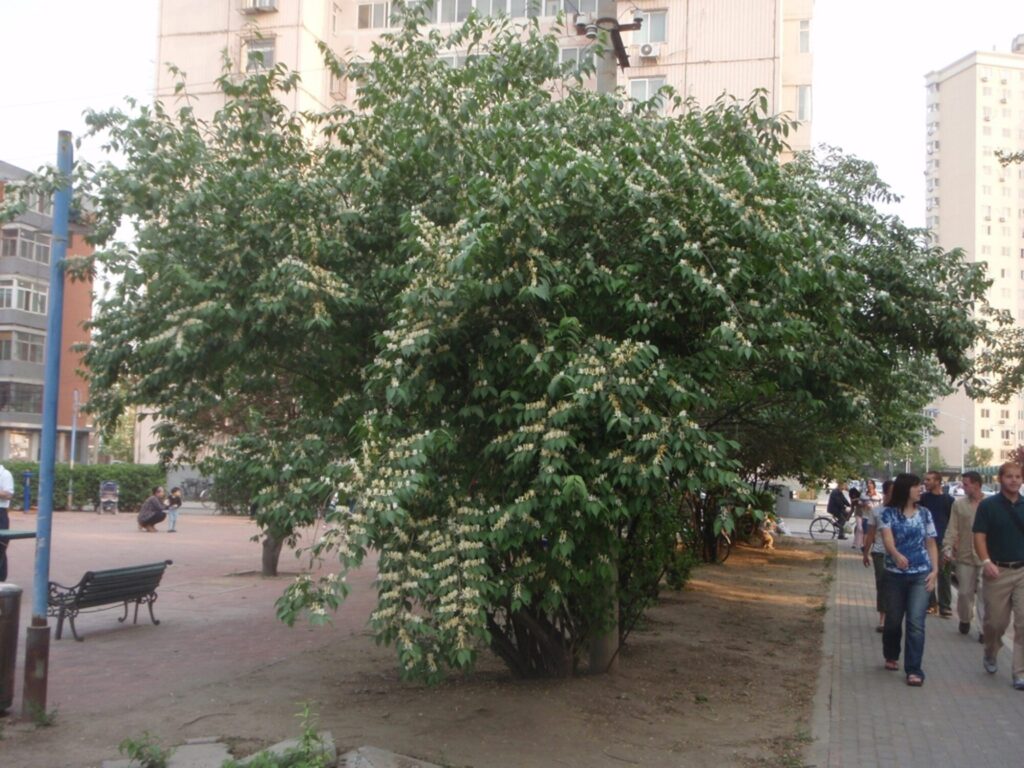

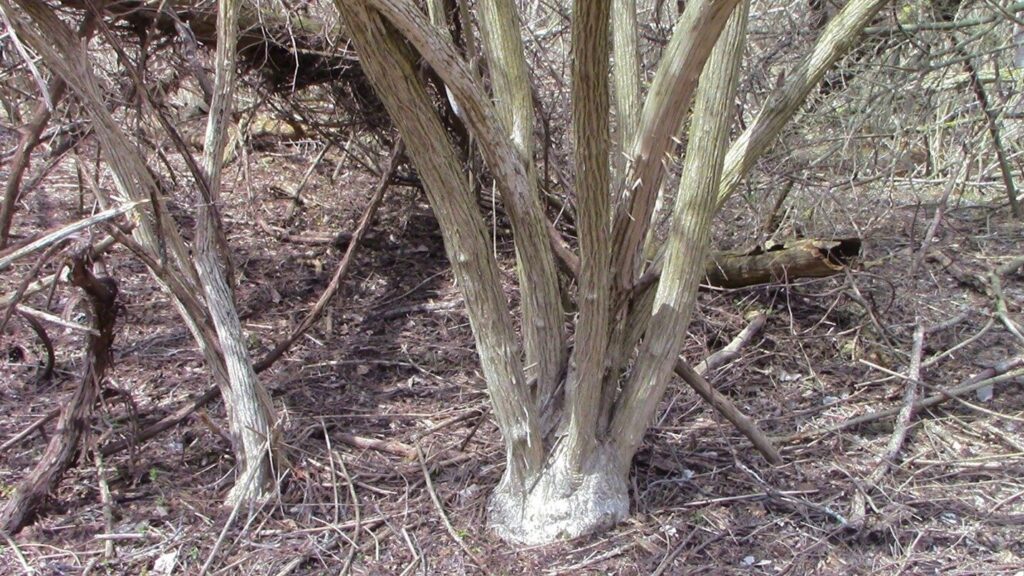
Winged euonymous/Buring Bush – Euonymous alatus
Burning bush is a very commonly planted ornamental shrub in the Midwest. The fall color can be described as spectacular with incredible reds on prominent display for weeks in fall. This shrub grows aggressively and proliferates in the landscape. Burning bush is very weedy and prolific in producing fruit, and may grow up to 20′ tall. The fruit is commonly foraged and carried by birds and other wildlife. The branches and stems are unmistakable with their corky “wings” which protrude out on all sides in irregular patterns. Some parts of the burning bush plant have mild toxicity. Burning bush out-competes other understory plants in forests, savannahs, and other ecosystems. Burning bush is already considered a noxious weed in North Carolina, and that classification may become more widespread as more states label it as such. Although its very attractive ornamental properties and tough growth characteristics make it a desirable landscape plant, it should be avoided due to its ability to escape cultivation and become an invader of local habitats.
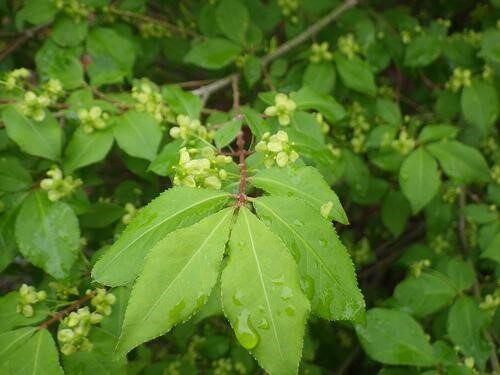
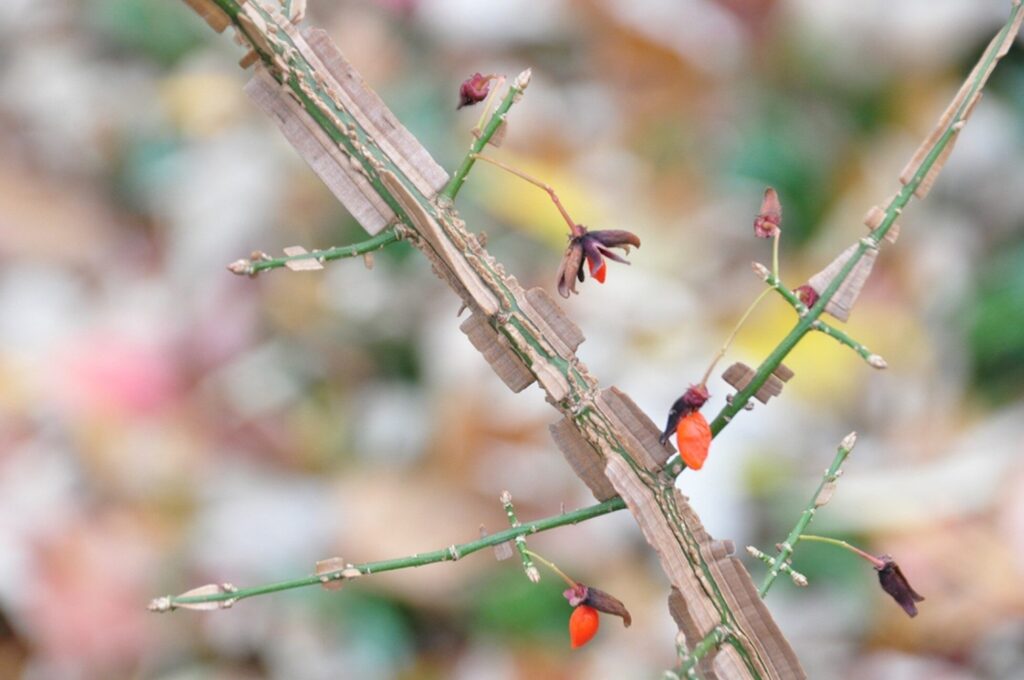

Oriental bittersweet – Celastrus orbiculatus
The last invasive woody plant we’ll detail here is actually a woody vine. Oriental bittersweet is somewhat sporadic in its distribution through our state but is known to exist in the Chicagoland area. Oriental bittersweet grows readily from roots and spreads very aggressively, and can hybridize with native bittersweet vine. Control of this invasive vine is extraordinarily difficult due to its ability to sprout repeatedly from any damaged sections in the root system. The leaves are simple and round, and the bark is gray with diamond-shaped spots. They may lack tendrils but can still climb trees with tight wrappings. Flowers are yellow and small and fruit are bright red and emerge from an orange or yellow cover which splits open in fall. As with the previous examples, say it with me this time: the fruit is foraged and transported by birds and other wildlife.


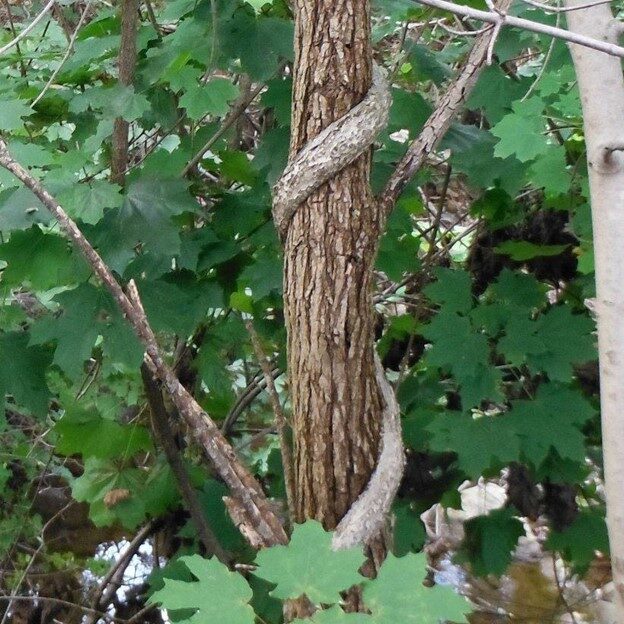
In the intricate dance of nature, invasive plants often disrupt the rhythm, posing a threat to the balance of our local ecosystems. Homer Tree Care emerges as a beacon of expertise and dedication, offering a tailored solution to combat the encroachment of these aggressive species. Our approach is rooted in a deep understanding of the ecological nuances at play, ensuring that the removal process is not only effective but also aligned with broader conservation goals. By choosing Homer Tree Care, individuals aren’t just addressing an immediate concern; they are actively participating in the restoration of biodiversity and the preservation of our native habitats. With a team well-versed in the intricacies of invasive plant management, Homer Tree Care stands ready to assist in creating landscapes that not only regain their aesthetic allure but also contribute to the resilience of our natural environments. Contact our arborists today!
